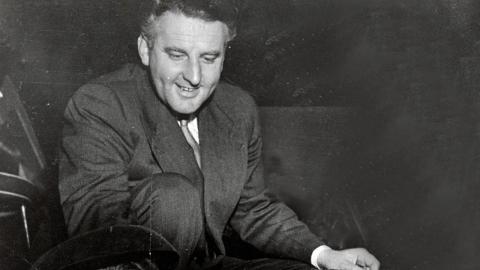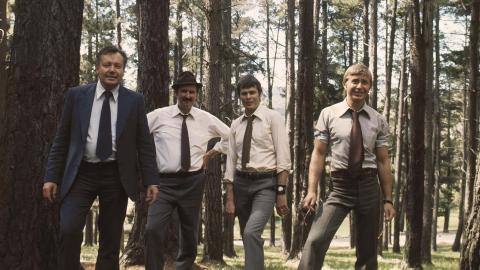
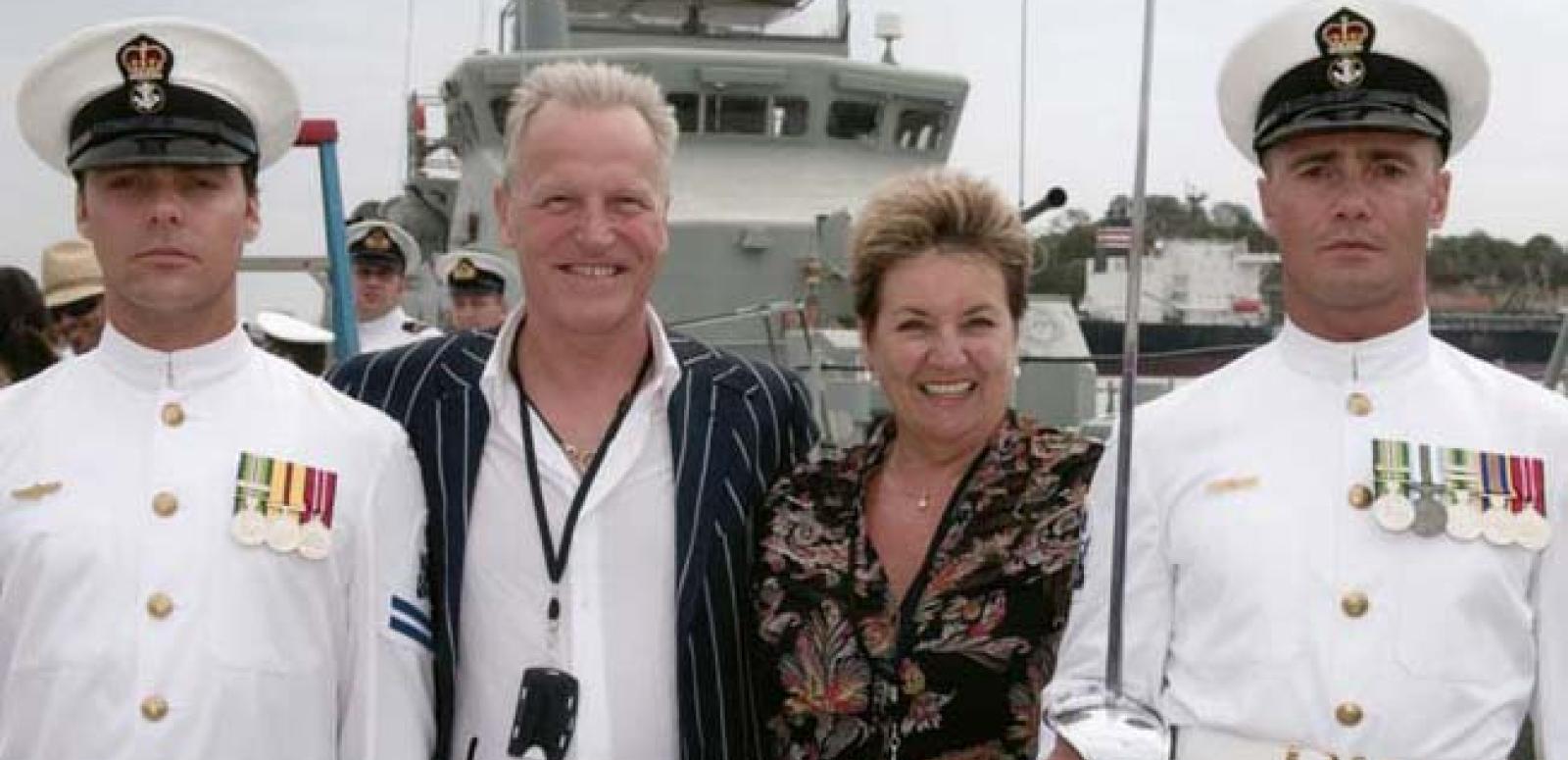
Hal McElroy
‘TV will be the gatekeeper, babysitter, lecturer and entertainer, but audiences will make the decisions. What’s important is the content.’ (Hal McElroy, interviewed in Weekend Review, 1996)
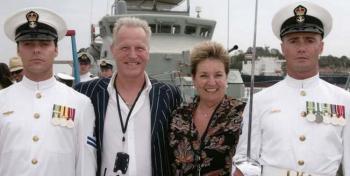
Hal McElroy’s desire to tell iconic Aussie stories has been a constant across his career and brought him and Australian film and TV viewers many rewards. In the 1990s Hal simultaneously produced three prime-time television hit dramas. I recently spoke with Hal at the NFSA’s Sydney office about this success and his career journey, ahead of United Nations World Television Day on 21 November.
In 2012 Hal donated a large collection of film and television material to the NFSA, including scripts, photographs, autographed documentation, Logie and People’s Choice awards, videos, posters, scrapbooks and treatments – enhancing the NFSA collection’s existing holdings of one of Australia’s remarkable producers. Hal explains why he chose the NFSA:
Hal McElroy interviewed by Frances Baldwin, 2013. NFSA title: 1157612
Hal has had a prolific career in Australian film and television for 40 years. With his brother Jim the McElroys produced classic films like [aso[The Cars that Ate Paris]] (1974), [aso[Picnic at Hanging Rock]] (1975) and [legacy-smartlink:The Last Wave] (1977) and Hal produced Razorback (1984) before moving into business with Hanna Barbera, later renamed Southern Star Entertainment. Hal eventually created his own company, McElroy All Media, with wife and partner Di McElroy.
I asked him how he feels about current challenges in television production and where he sees television in 2013:
Hal McElroy interviewed by Frances Baldwin, 2013. NFSA title: 1157612
When asked if he has favourite productions, Hal is matter of fact. Like children, he says, he doesn’t have favourites, and he’s aware not everyone loves the same things:
Hal McElroy interviewed by Frances Baldwin, 2013. NFSA title: 1157612
Hal had been very successful in film, so the switch to television was somewhat unexpected. Here Hal explains how he got into producing television when writer Michael Laurence sent Hal a treatment for the mini-series Return to Eden (1983):
Hal McElroy interviewed by Andrew Mercado 2003
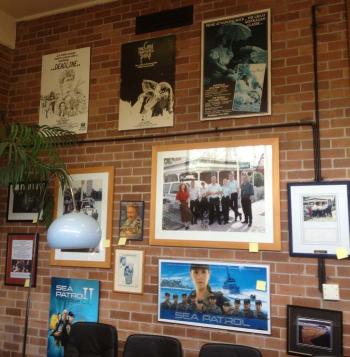
Return to Eden was a great success here and overseas, drawing a television audience of 75 million and selling to 50 countries, including Poland, Indonesia and Norway. It provided rich fodder for a later 22-episode series (1986), which aired on Network Ten. Return to Eden was even remade in India to critical success – a tribute to television’s international appeal.
Continuing to produce film and television, Hal was executive producer on the mini-series The Last Frontier (1986), starring Jack Thompson and US star Linda Evans; made A Dangerous Life (HBO 1988), Which Way Home (Turner Broadcasting 1990) and [aso[The Sum of Us]] (1994), starring Russell Crowe and Jack Thompson; and created children’s television with Amazing (Southern Star 1994-98).
However it was in the mid-1990s when Hal was working at Southern Star that he produced two of television’s most iconic Australian dramas, Blue Heelers (1994-2006) and Water Rats (1996-2001).
Excerpt from Blue Heelers – A Woman’s Place (1993)
Blue Heelers was seen in over 70 countries and lasted 13 years, making it the longest running homegrown police drama on Australian television, beating Homicide (1964-76) by just one episode. During 13 seasons it was nominated 50 times for various awards, taking home 32 wins, including 5 Gold Logies. At its peak it drew 3.4 million viewers and attracted many talented actors, including Hugh Jackman, Marcus Graham and David Wenham. When Blue Heelers was cancelled in January 2006 the news made front-page headlines on nearly all of Australia’s major daily newspapers.
Water Rats ran for 177 episodes and also had enormous appeal. Using picturesque locations around Sydney Harbour from Shark island to Long Bay Correctional Centre, it was one of the first crop of police dramas with a high action quota shot on Super 16mm. It sold to 200 countries including the UK, Ireland and Denmark and, rather curiously, the Ukraine. Among its many awards was the 1996 Logie Award for Most Outstanding Achievement in Drama, which Hal has donated to the NFSA.
Excerpt from Water Rats – Goes With the Territory (1999)
The nineties was a busy period: Hal was creating Murder Call (1997-98), a murder mystery with a retro feel, for Southern Star and the Nine Network and working closely with friend David Williamson on a theatre-inspired comedy, Dog’s Head Bay (1999), starring Gary Sweet, for the ABC.
Excerpt from Murder Call – Black Friday (1997)
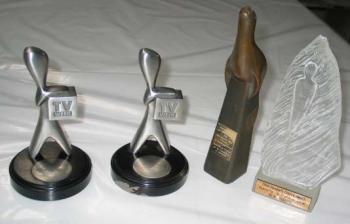
Ahead of his time with innovative ideas, Hal ventured into multi-platform spaces when he created a unique new series, Going Home (2000-01). Costing $3 million for 65 episodes it aired weeknights on SBS and followed a group of train commuters on their way home from work. It was a breakthrough concept – written, shot and edited the day it aired, incorporating the day’s news stories. Viewers were asked to contribute storylines, making it a more interactive experience. It was shot reality-style with hand-held camera and some improvised dialogue. This format was sold to Canada, France and Italy.
TwentyFour Seven (2002) was an interactive TV comedy set in a magazine office, combining drama and soap opera with topical news and current affairs and allowing audiences to vote on storylines. According to Hal, this format was truly interchangeable and able to be modified for any audience in the world.
Returning to drama, Hal and wife Di used a navy boat, the HMAS Hammersley, for ‘action adventure on the high seas’ in Sea Patrol (2007-11, Nine Network). Sea Patrol was five times more expensive than Blue Heelers and equally successful. With a large cast and exotic locations it received big ratings and ran for a very successful five seasons.
Excerpt from Sea Patrol – Oh Danny Boy (2009), series 3 episode 6. NFSA title: 793651
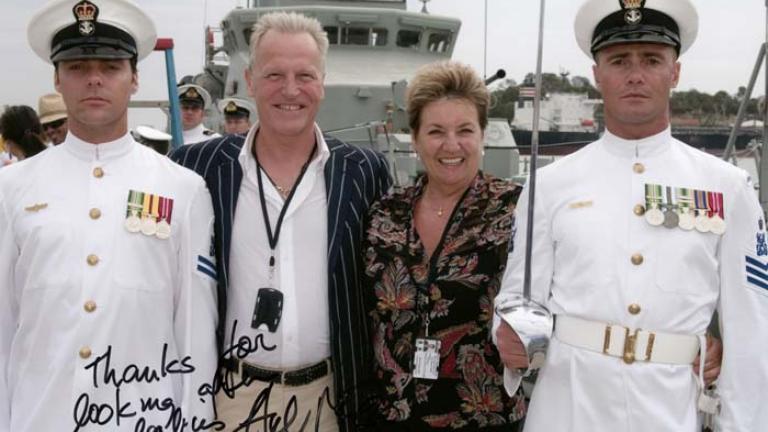
(L-R) Actor Matthew Holmes (Chris Blake), Hal McElroy and Di McElroy (Executive producers) and actor Jeremy Lindsay Taylor (Pete Tomashevski) on the set of 'Sea Patrol'. Photo signed by Hal McElroy. NFSA: 753422
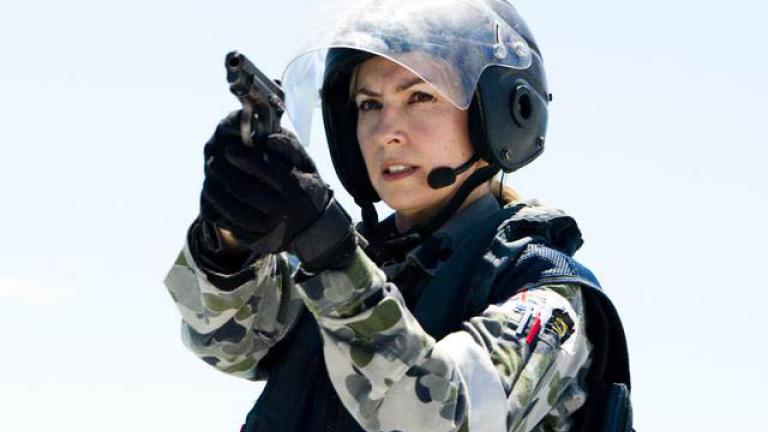
Lisa McCune in a still from 'Sea Patrol', series 5. Courtesy Nine Network
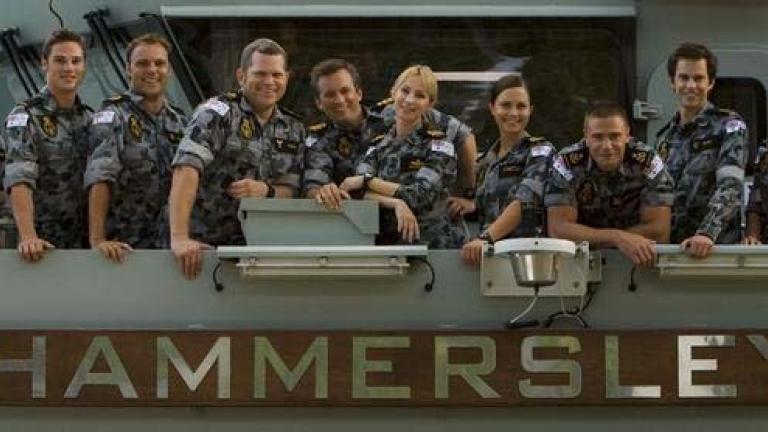
'Sea Patrol' cast. Courtesy Nine Network
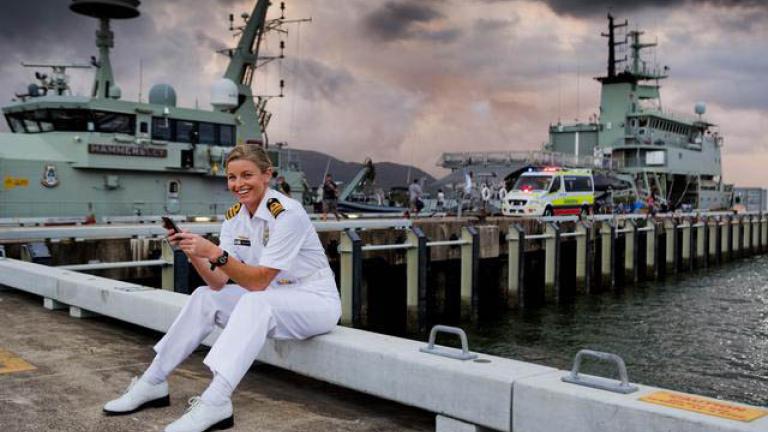
Still from 'Sea Patrol' series 5. Courtesy Nine Network
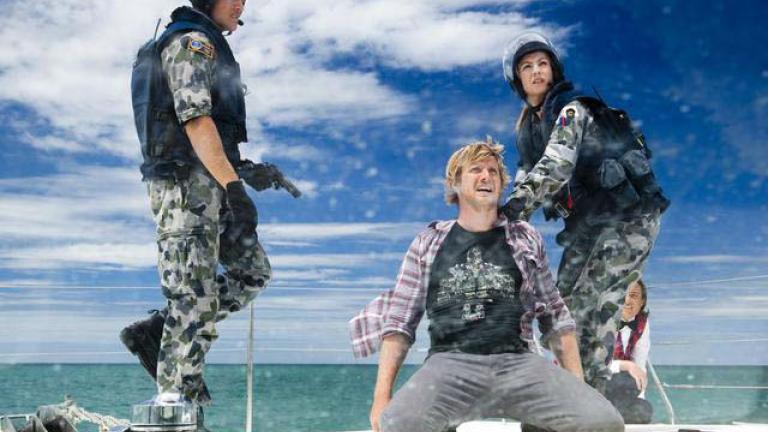
Still from 'Sea Patrol' series 5. Courtesy Nine Network
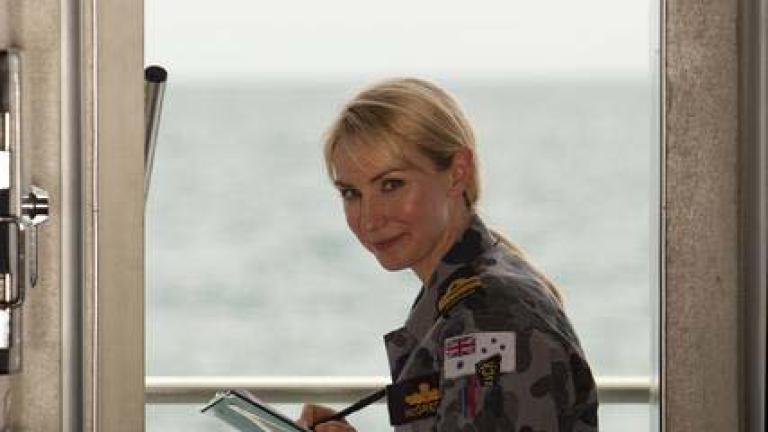
Lisa McCune in a still from 'Sea Patrol', series 5. Courtesy Nine Network
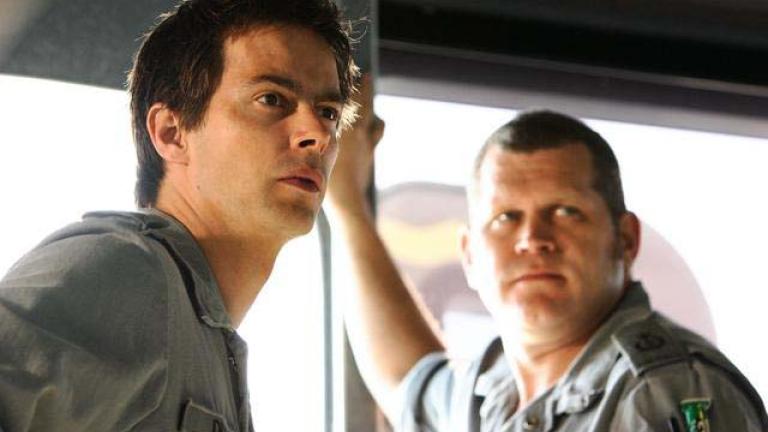
Still from 'Sea Patrol' series 2. Courtesy Nine Network
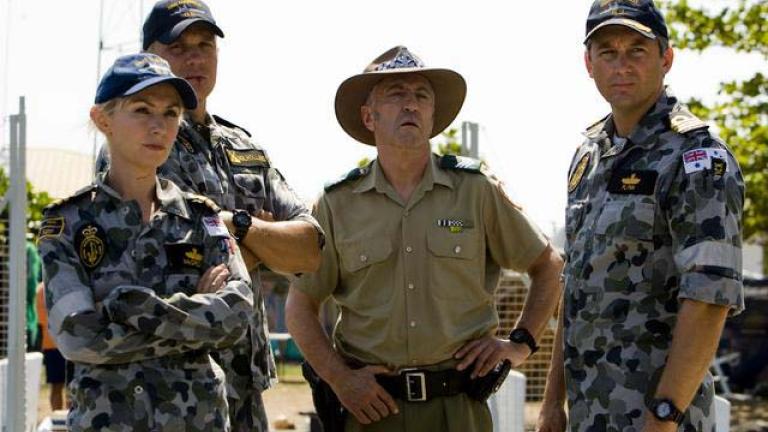
Still from 'Sea Patrol' series 4. Courtesy Nine Network
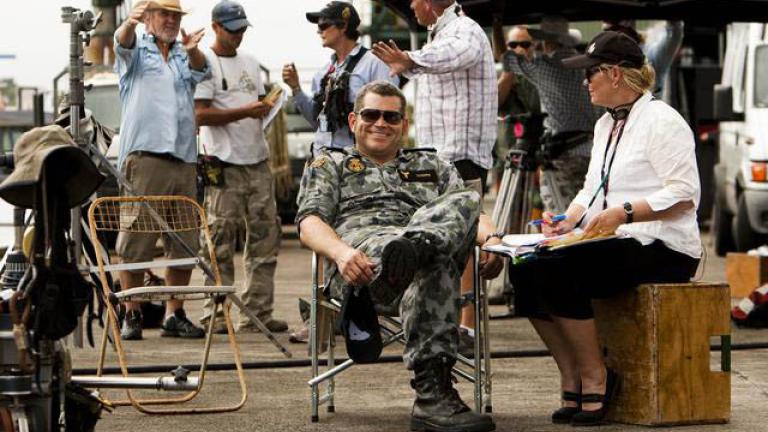
On the set of 'Sea Patrol' series 5. Courtesy Nine Network
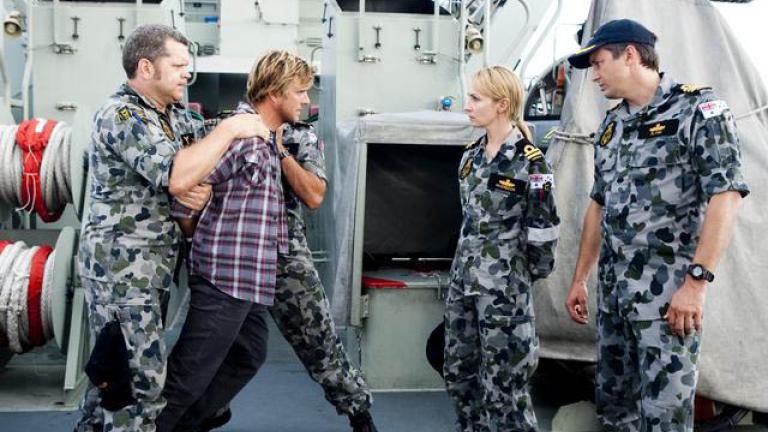
Still from 'Sea Patrol' series 5. Courtesy Nine Network
Images from Sea Patrol, courtesy Nine Network
Hal McElroy’s enthusiasm for telling Australian stories looks set to continue, with many irons in the fire and a continued passion for the television industry. UN World Television Day is an ideal opportunity to acknowledge Hal’s ongoing contribution to Australian storytelling and its dissemination through the medium of television.
Learn more about our Television collection »
The National Film and Sound Archive of Australia acknowledges Australia’s Aboriginal and Torres Strait Islander peoples as the Traditional Custodians of the land on which we work and live and gives respect to their Elders both past and present.

